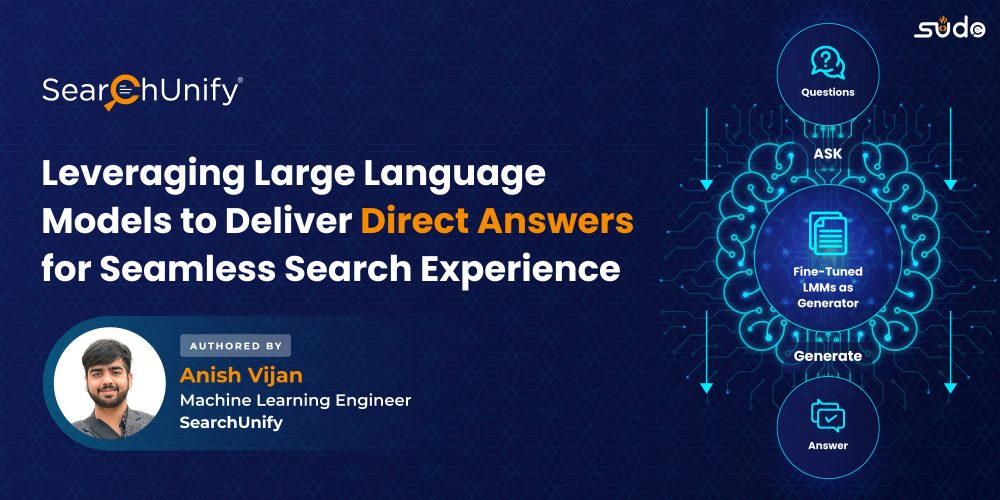
Imagine asking the system, “How can I troubleshoot an issue with this software?” In the past, you might have received a fixed set of predetermined answers like “Check the user manual,” leading you to spend frustrating hours sifting through lengthy documents or searching through forums for a solution.
However, with the advent of Large Language Models (LLMs), the situation changes dramatically. Now, you can receive automatically generated step-by-step responses that guide you through the troubleshooting process. For instance, you might get instructions like “Identify the problem, Reproduce the issue, Check for known solutions, Update software and system, Verify system requirements,” and more. Thanks to Large Language Models, obtaining practical and customized assistance for software troubleshooting has become a seamless and efficient experience.
With LLMs at our disposal, businesses can now offer you a seamless and efficient experience in the form of direct answers. These powerful Artificial Intelligence (AI) marvels excel at understanding natural language and extracting relevant information from vast repositories of data, including product documentation, forum discussions, and knowledge bases. And generate a step-by-step or concise response in a jiffy so you don’t have to!
In this blog post, we delve into the nitty-gritty of direct question-answering with LLMs, exploring how they unleash the potential for enhanced customer experience. Let’s dive in!
How LLMs Improve Direct Answers
- Addressing Niche Queries with Accuracy: Apart from general inquiries, LLMs are adept at handling niche and domain-specific questions with accuracy. Whether it’s technical jargon in the IT industry or medical terminology in healthcare, LLMs can comprehend specialized language and provide accurate answers. This versatility expands the range of queries LLMs can tackle, making them valuable tools for businesses operating in diverse sectors.
- Delivering Tailored Responses with Efficiency: Unlike traditional search engines or support systems, LLMs can understand the context and nuances of a question, enabling them to provide specific and relevant answers. For instance, when a customer asks, “How can I troubleshoot an issue with my smartphone battery life?”, LLMs can analyze the query and deliver step-by-step instructions customized to the user’s device and software version. Such personalized responses not only improve customer satisfaction but also enhance overall engagement and loyalty.
- Ensuring Adaptability to Evolving Needs: In the dynamic digital landscape, user needs and search patterns are constantly evolving. LLMs have the remarkable ability to adapt by continually learning from new data and user interactions. Their adaptability ensures the continuous delivery of relevant and up-to-date direct answers, making them invaluable tools for businesses seeking to provide accurate information in a rapidly changing environment.
- Leveraging Contextual Understanding: Another impressive aspect of LLMs is their contextual understanding. These language models excel at grasping contextual cues, such as pronouns, temporal references, and location-specific information. This deep comprehension allows LLMs to gauge the nuances of a question accurately and provide contextually relevant responses. By understanding the user’s intent and context, LLMs enhance the user experience, ensuring more precise and personalized answers.
But LLMs Also Have Limitations
As powerful as Large Language Models are in enhancing direct question-answering, they are not without their hurdles. In this section, we will explore the roadblocks that can impede the smooth functioning of LLMs, and how these challenges can impact the accuracy and reliability of the generated responses.
-
Biases and Skewed Data: LLMs are trained on large datasets, which can inadvertently include biases present in the data. These biases can affect the accuracy and reliability of direct answers generated by the models. Biased data can lead to discriminatory or misleading responses, especially on sensitive topics.
Example: If an LLM is asked, “Are vaccines safe?” and the training data contains biased information or opinions, it may generate an answer that is influenced by those biases, potentially spreading misinformation or reflecting a skewed perspective.
-
Lack of Fact-checking Capability: While LLMs can generate answers based on the information they were trained on, they lack an inherent fact-checking mechanism. They do not have the ability to verify the accuracy or reliability of the information they provide. This can lead to the propagation of false or unverified claims.
Example: If an LLM is asked, “Verify the source for this fact: The shortest war in history was between Britain and Zanzibar on August 27, 1896. It lasted only 38 minutes.” It will provide an outdated or incorrect answer based on its training data. Additionally, it may answer “I apologize for any confusion caused. Numerous reputable sources, including historical records, news articles, and books, confirm this information. You can find further details by conducting a search using keywords like “shortest war in history” or “Britain vs. Zanzibar war.”
-
Overconfidence and Incorrect Certainty: LLMs often exhibit overconfidence in their responses, even when they are incorrect. They may generate answers with a high level of certainty, giving users a false sense of accuracy. This can be problematic when dealing with complex or nuanced topics.
Example: If an LLM is asked a medical question and it generates a confident-sounding answer that is incorrect or potentially harmful, users might trust the response without seeking professional medical advice, leading to potential health risks.
-
Limited Ability to Handle Complex Queries: LLMs excel at generating text based on prompts, but they may struggle with complex queries that require multi-step reasoning or in-depth analysis. They are better suited for generating general knowledge or providing simple factual information.
Example: When asked, “What are the economic implications of the trade war between the United States and China?” an LLM might struggle to provide a comprehensive and accurate answer due to the complexity and multiple factors involved in the topic.
Overcoming Limitations of LLMs and Deliver Accurate Direct Answers
Here is the three-step approach which takes your LLM away from all the above-stated challenges:
- Pre-training: LLMs are initially trained on massive amounts of text data, enabling them to learn grammar, context, and semantic relationships. This pre-training phase equips LLMs with a comprehensive understanding of language.
- Search Methods: To generate direct answers, LLMs utilize sophisticated search algorithms that comb through vast amounts of data, analyzing content and selecting relevant snippets. These algorithms consider various factors such as relevance, popularity, and user intent, ensuring the accuracy and usefulness of the provided answers.
- Fine-tuning: LLMs are fine-tuned using specific data sets to align them with the desired objectives. This process refines their ability to generate accurate and contextually relevant direct answers.
Embracing the Marvels of LLMs and Direct Answers with SearchUnify GPT™
LLMs have sparked a revolution in the realm of search engines, delivering immense advantages to users and businesses alike. As LLM technology continues to evolve, we can anticipate even more precise direct answers tailored to users’ needs, solidifying the indispensable role of LLMs in the search world.
SearchUnifyGPT™, with its seamless integration with leading LLMs such as BARD, Open AI™, open-source models hosted on Hugging Face™, and our in-house inference models, takes this experience to the next level. Learn more about it here.










